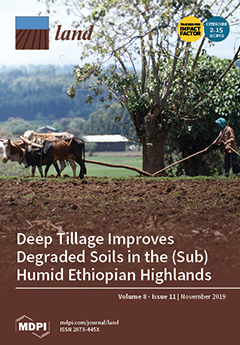Resource information
The major topic of this article is the evaluation of the regional differentiation of the long-term changes in land use in Czechia. This study searches the spatial and temporal differentiation of the changes and their driving forces since the 19th century. The comprehensive land use land cover change database (LUCC Czechia Database) which comprises cadastral data on the land use in the years 1845, 1896, 1948, 1990, 2000, and 2010 for more than 8000 units, was the main data source. The chief benefit of this article can be seen in the methodical procedures of the application of the “Rate of heterogeneity” (H) derived from the Gini coefficient in the research of the differentiation/inequality of the long-term land use change. GIS modeling tools were used to calculate the selected geographical characteristics (altitude and slope) of the examined units for the purpose of searching the factors of the land use changes. The results show a strong trend in the differentiation of the long-term land use changes. Two main antagonistic processes took place in the land use structure during the observed period of 1845–2010. The fertile regions experienced agricultural intensification with the concentration of the arable land in these regions. On the other hand, the infertile regions experienced extensification, accompanied by afforestation and grass planting during the last decades. The influence of natural conditions (altitude and slope) on the distribution of the land use has been growing—the arable land has been concentrated into the lower altitudes and, more significantly, into less steep areas. Grasslands and forests predominantly occupy the less favored areas with higher altitudes and steeper slopes. The built-up areas have been strongly concentrated and regionally polarized. In 1845, half of the Czech built-up areas were concentrated in 31% of the total country area, whereas in 2010, it was in 21%.


